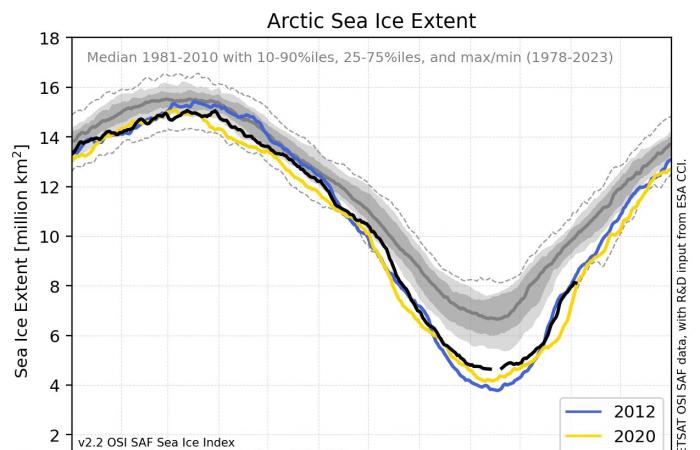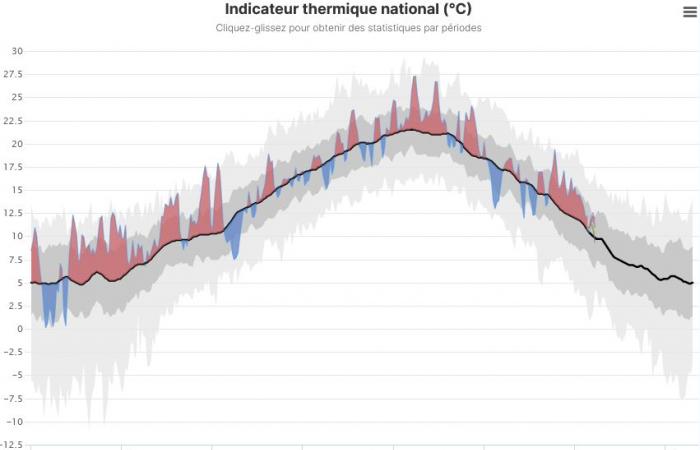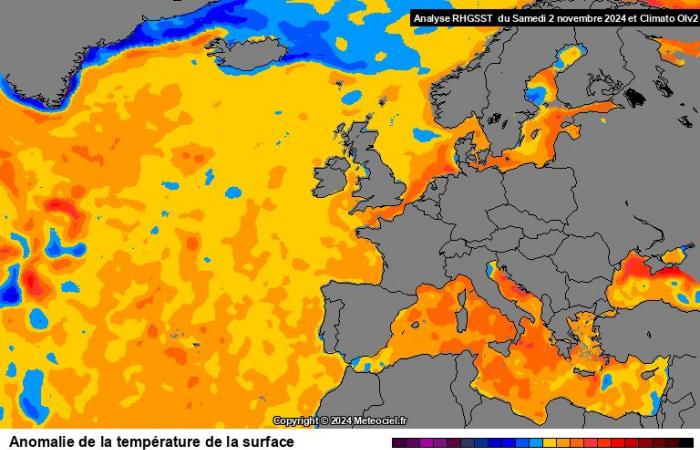Temperatures on the Earth's surface reached 14.98°C in 2023, or +1.45°C ± 0.12°C compared to the level of the pre-industrial era.
Temperature anomalies to the annual global average between 1850 and 2023 (compared to the 1850-1900 standard) – OMM
The year 2016 with values of +1.29 ± 0.12 °C and the year 2020 with values of 1.27 ± 0.12 °C were previously ranked as the warmest on record.
Average ocean surface temperatures have reached unprecedented levels from April 2023 (helped by the El Nino phenomenon). Since the end of this episode, the levels of 2024 have struggled to fall below those of 2023!

Ocean surface temperatures, 2022-2023 (orange) and 2023-2024 (red) – ClimateReanalyzer
This phenomenon is associated with heatwaves and marine heat waves. Every day, 32% of the global ocean was affected in 2023 (compared to 23% in 2016, the previous record!).
As an indication, a marine heat wave across the North Atlantic Ocean appeared in November and persisted into 2024, with temperatures exceeding +3°C compared to standards.

Map of the most severe marine heatwave recorded at each point on the globe (from moderate in yellow to extreme in black) – OMM
Arctic sea ice (North Pole), for its part, suffered another extremely weak summer without reaching the record values of 2020 and 2012. However, it reforms with difficulty due to the bursting of the polar vortex currently observed and is close to these record values during the first days of November. This variable will be monitored this winter.

Extension of Arctic sea ice (in millions of km²) – globalcryospherewatch
In France, the national thermal indicator reaches +14.98°C for 2024.
This value is not yet definitive, it being estimated at +13.7°C if the rest of the year follows strictly normal temperatures compared to the period 1981 – 2010, i.e. a level comparable to 2014. Value which will be most likely revised upwards with current surpluses.
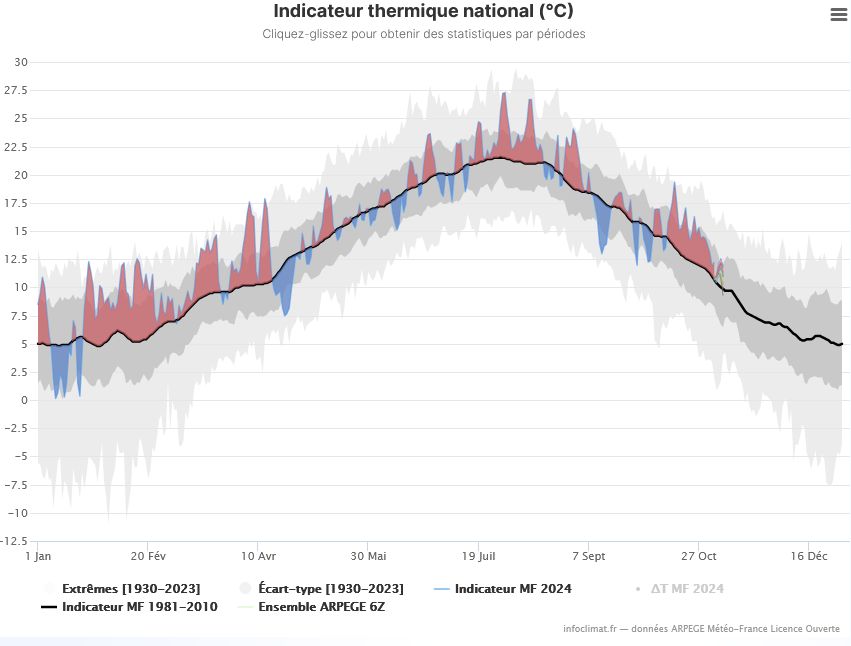
National heat indicator for the year 2024 (ongoing) – Infoclimat
The temperatures of our seas are in a state of marine heat wave, with values exceeding the 1971-2000 standards of +2 to +3°C on the Mediterranean arc and in the English Channel.
Alone the Atlantic observes lower values (between +1 and +2°C compared to the 1971 – 2000 norm. This anomaly, however, remains much more geographically widespread and joins the extreme anomaly in the North Atlantic observed since 2023.
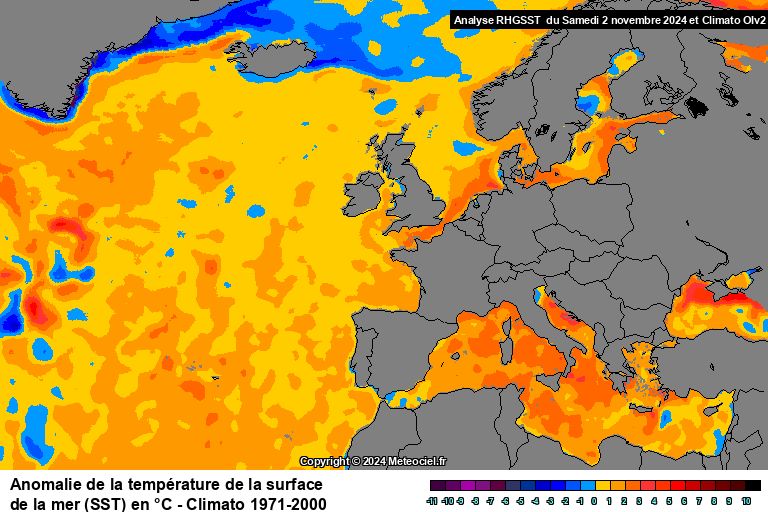
Sea surface temperature (SST) anomalies compared to the 1971 – 2000 standard – Meteociel



